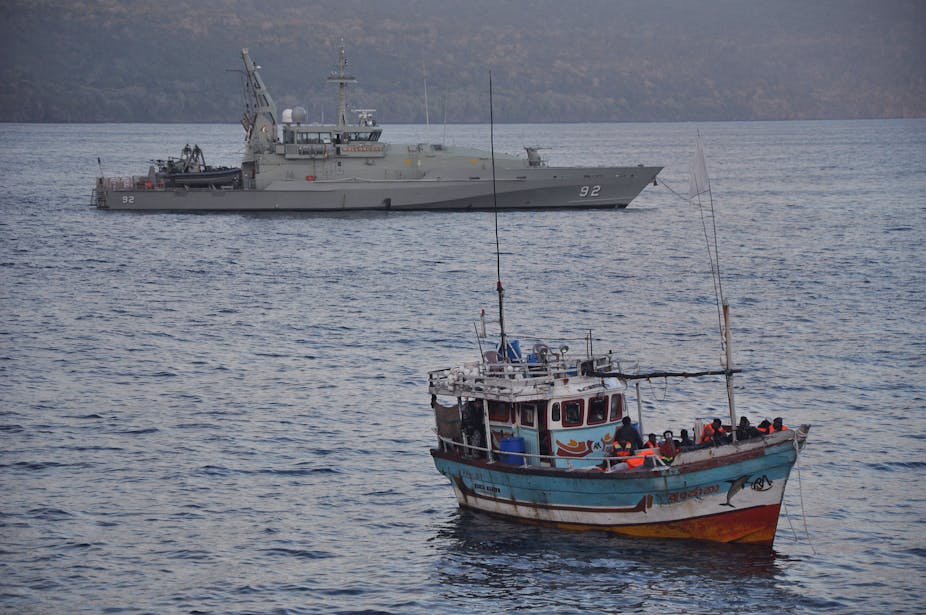In matters of national security, who is deviant and poses a threat to our safety depends on the claims made by those in positions of power and the sociopolitical climate. The news media are crucial in this process. Often, a particular social problem goes through four stages of claims-making before it is successfully constructed as a “legitimate” problem that requires punitive responses.
In Stage One, groups claim that there is an offensive and undesirable condition, and demand change. When governments respond to these claims, the problem moves to Stage Two. Government responses are crucial because without them a claim will be just that. Official recognition and response legitimates the claim.
In Stage Three, new claims and demands emerge because there is dissatisfaction with the official responses to the first claim. In Stage Four, alternative solutions are suggested or established.
Throughout this process, interested groups are the primary claims-makers while the media are the secondary. It is crucial to examine the media’s claims-making activity in the construction of “threats to national security” because it is through the media that messages are transmitted to larger audiences.
Importantly, the public’s sense of concern regarding a social problem often comes from the media rather than the primary claimants. These have implications in the policy-making process.
Stage One: boat people
In constructing social problems relating to “security”, the persistent undesirable condition has been that of the “boat people”.
The dominant frames when reporting on this group are often of “deviance” and “threats to security”. When asylum seekers arrive on Australian shores, they are not just considered a problem, but a “deviant” problem. Normality is what this group is not because they are considered to transgress many boundaries and established orders.
Themes emphasising threats to security have persisted since the late 1990s and early 2000s. In 1999, the Courier-Mail newspaper reported a:
Record Arrest of Boat People – Swoop Nets 350 Illegal Boat People
The incident, the largest single attempted incursion on record, follows the most sustained assault on Australia’s shores since the refugee tide following the Vietnam War.
More recently, Herald Sun columnist Andrew Bolt opined that:
The head of ASIO last month confirmed 58 boat people had since been judged to pose a threat to national security. But with so many boat people now arriving … the danger goes beyond a few terrorists.
These narratives often lead to punitive measures for “our” safety and protection from illegal immigrants.
Stage Two: officials respond
Media claims-making, which endorsed claims and ideologies by specific primary claims-makers, has inspired government response.
By 2001, there were seven privatised detention centres for mandatory detention of unauthorised arrivals by boat. In 2009, then-prime minister Kevin Rudd claimed Labor’s policies on asylum seekers were “tough but humane”. He abolished temporary protection visas but mandatory detention of unauthorised asylum seekers remained to “stop the boats”.
Recently, the current prime minister, Tony Abbott, declared that he will be accountable to the Australian people because:
… they expect us to stop the boats and that’s what we are doing.
Abbott later commented that six months without seeing boat arrivals is a “very satisfactory milestone” for Australia. This victory was endorsed by the press, placing it in context with Labor’s policies:
According to historical figures, the previous Labor government in the same six-month period in 2012-13 saw 190 boats with 12,773 asylum seekers illegally landing on Australian shores.
Stage Three: dissatisfaction with official response
Despite this social problem finally being “addressed” by turning around the boats and responding to the initial claims, the responses were deemed inadequate for “our” safety because now we faced a new problem: “plane people”.
Fairfax Media recently reported that:
Rampant visa fraud and migration crime involving people flying into Australia are going unchecked while the government focuses on stopping boats.
Australia’s national security is being compromised by wide-scale visa rorting and migration rackets operating with impunity including some with links to terrorism or organised crime.
In the following months, domestic terrorists were the new threat.
Security agencies prepare to lift the national terror warning to high from its medium level … a terrorist attack in Australia is now likely. – Fairfax Media, September 10
Australians [are] continuing to join extremist groups such as the Islamic State either as fighters or supporters. – Fairfax Media, October 27
Stage Four: new solution to the new problems
The “national security” social problem has shifted from inspiring calls to “stop the boats” to identifying those who are “flying” to Australia “unchecked” to now being about Australians joining foreign fighters.
The current problem has led to the implementation of new offences that carry severe punishment, new powers for national security agencies, and new terror laws without adequate legal scrutiny. According to terror law expert George Williams, these laws:
… target free speech, movement and association.
Why analyse the construction of a social problem? The concern in doing so is not the validity of the claims, but how the problem was constructed and kept alive. It is this that will have implications for the implementation of restrictive and punitive laws.
Editor’s note: Meron will be on hand to answer questions between 2 and 3pm AEDT on November 14. Ask your questions about constructing a security threat in the comments below.

